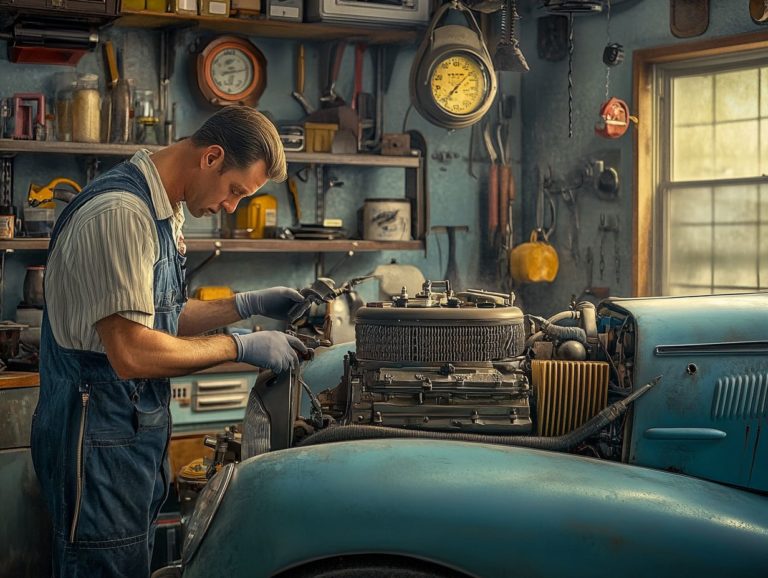How to Inspect Your Car Before Driving
Before you hit the road, make sure your vehicle is road-ready for a safe adventure!
Pre-trip inspections are your best defense against unexpected breakdowns and wallet-draining repairs. They are crucial for any driving routine. Start by checking the exterior for tire wear and light functionality. Then, assess the interior for seatbelt safety and dashboard alerts. Every detail matters.
This guide walks you through essential inspection steps, including under-the-hood checks and a convenient pre-driving checklist. This way, you can drive confidently on your next adventure.
Contents
Key Takeaways:
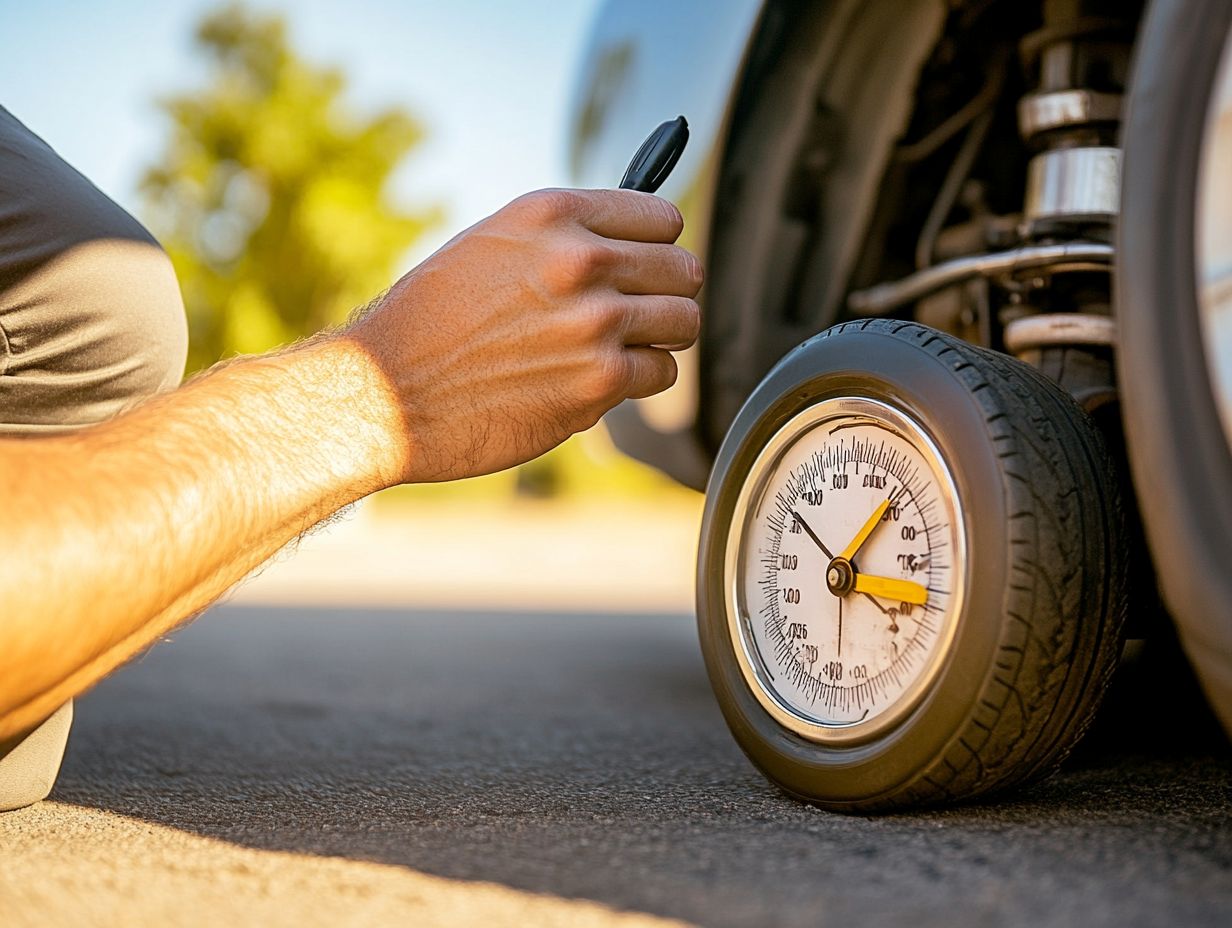
- Performing pre-trip inspections can ensure your safety and prevent unexpected breakdowns on the road.
- Check your tires, lights, and body for damage, as well as the dashboard, seats, and seatbelts before driving.
- Don’t forget to inspect fluid levels, belts, and hoses under the hood, and complete a final checklist before hitting the road.
Start your inspection today to ensure a safe journey tomorrow!
Why Pre-Trip Inspections are Important
Pre-trip inspections are essential for making sure your vehicle is safe and ready for the road. They help you avoid unexpected breakdowns and costly repairs.
In a world where driving safety is critical, knowing what to check before buying a used car can save you both money and lives.
By examining fluid levels and tire pressure and assessing brake and electrical systems, these inspections give you a thorough evaluation of your vehicle’s condition.
Companies like RepairSmith, founded by Duston Maynes, highlight the importance of these inspections for personal and professional vehicles. They guarantee that every journey you take is as safe as possible.
Ensuring Safety and Preventing Breakdowns
Ensuring your safety and preventing breakdowns are key reasons to conduct thorough vehicle inspections before any trip, including what you should check before a long drive.
A comprehensive inspection covers various aspects of your vehicle’s condition. Start with tire checks to confirm how deep the grooves in your tires are and their inflation; these factors significantly influence traction and fuel efficiency.
Brake inspections are just as vital, as they directly impact your stopping power and overall driving safety.
Don t overlook fluid levels keeping an eye on oil, coolant, and windshield washer fluid is essential for optimal engine performance and extending the longevity of your vehicle.
Services like RepairSmith emphasize the importance of these checks, providing expert evaluations that help you steer clear of costly repairs while ensuring your peace of mind on the road.
Exterior Inspection
A thorough exterior inspection is your first step toward guaranteeing that your vehicle is roadworthy and safe for travel. This meticulous process involves examining critical components, including tires, lights, and the body of the vehicle, for any signs of damage that might jeopardize your safety on the road. Additionally, learning how to prepare your car for road trips can further enhance your travel safety.
Tires, Lights, and Body Damage
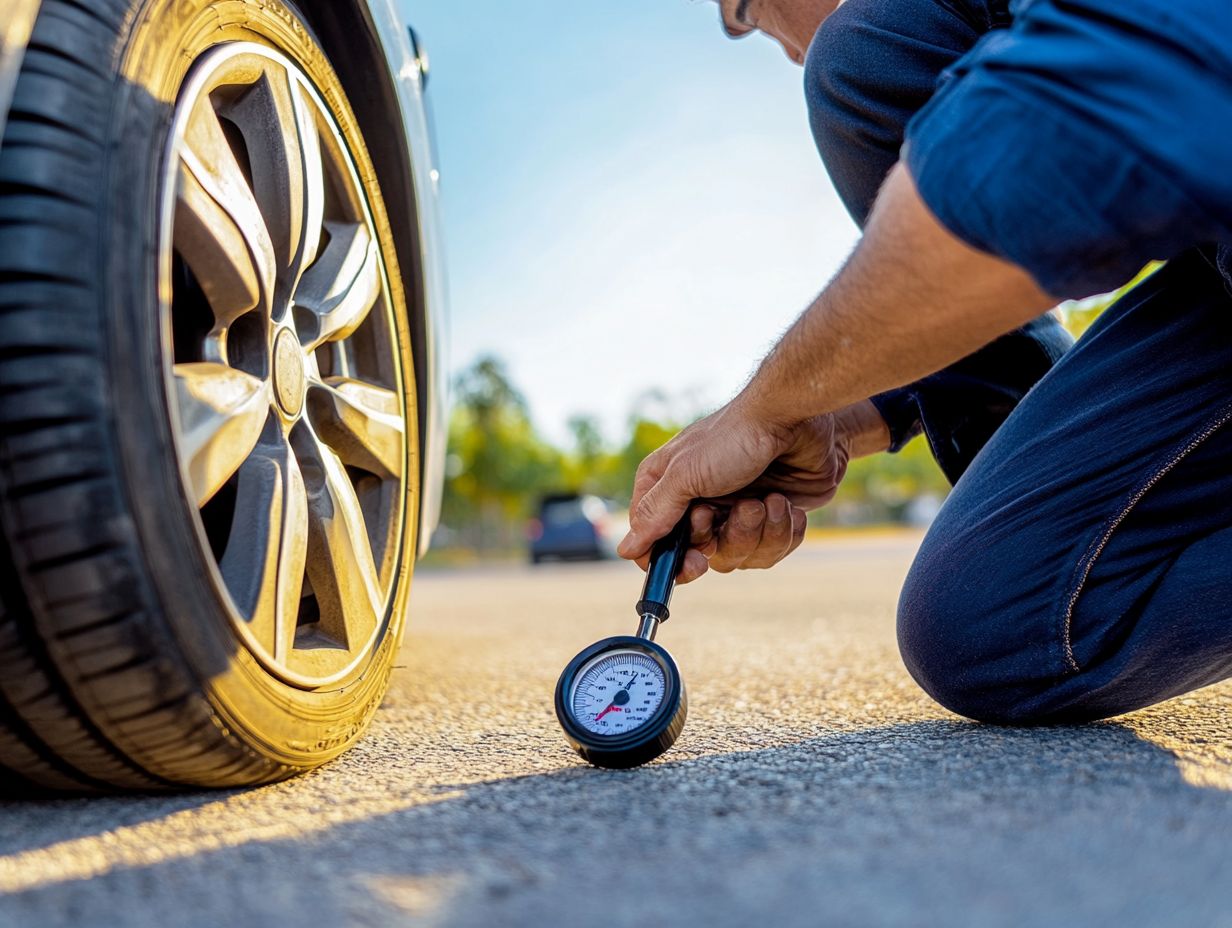
The condition of your tires, lights, and body is paramount to the overall safety of your vehicle.
Regular inspections are your best defense against serious accidents and costly repairs. Start with your tires; measuring the tread depth is essential. A handy trick is the penny test: insert a penny into the tread, and if Lincoln s head is partially covered, you re in good shape.
Next, grab a gauge to check your tire pressure, ensuring it aligns with the manufacturer s specifications for optimal performance.
Don t overlook the importance of verifying that all lights headlights, brake lights, and turn signals are functioning correctly; this is crucial for visibility and communicating with other drivers.
Finally, take a moment to inspect the vehicle’s body for any dents or scratches, as these can sometimes indicate more significant structural issues.
These straightforward checks are essential for ensuring your vehicle remains safe and reliable on the road.
Interior Inspection
An interior inspection is essential for guaranteeing both passenger safety and comfort during travel. It delves into key areas such as the dashboard, seats, and seatbelts.
This thorough examination goes beyond mere cleanliness. It ensures that all safety features are operating correctly, providing peace of mind on every journey.
Dashboard, Seats, and Seatbelts
The dashboard acts as your central hub of information, making its functionality a vital part of your interior inspection.
To ensure all dashboard indicators are operational, systematically test each gauge and notification light. Confirm they illuminate correctly when the vehicle is powered on. This process checks if the vehicle is ready to drive and helps identify any potential issues early on.
A thorough examination of seat adjustments is equally important. Confirming that seats can be easily modified for comfort significantly enhances your driving safety.
It s crucial to ensure that all seatbelts are intact, functional, and free from frays. These safety features play a pivotal role in protecting passengers during travel.
Together, these elements contribute to a comprehensive vehicle inspection, reinforcing your overall safety and reliability on the road.
Unlock the Secrets Under Your Hood!
An under-the-hood inspection is crucial for spotting potential mechanical issues before they evolve into expensive automotive repairs. This inspection includes a thorough examination of fluid levels, belts, hoses, and other vital components, ensuring your vehicle runs smoothly and efficiently.
Taking this proactive step not only safeguards your investment but also enhances your driving experience.
Fluid Levels, Belts, and Hoses
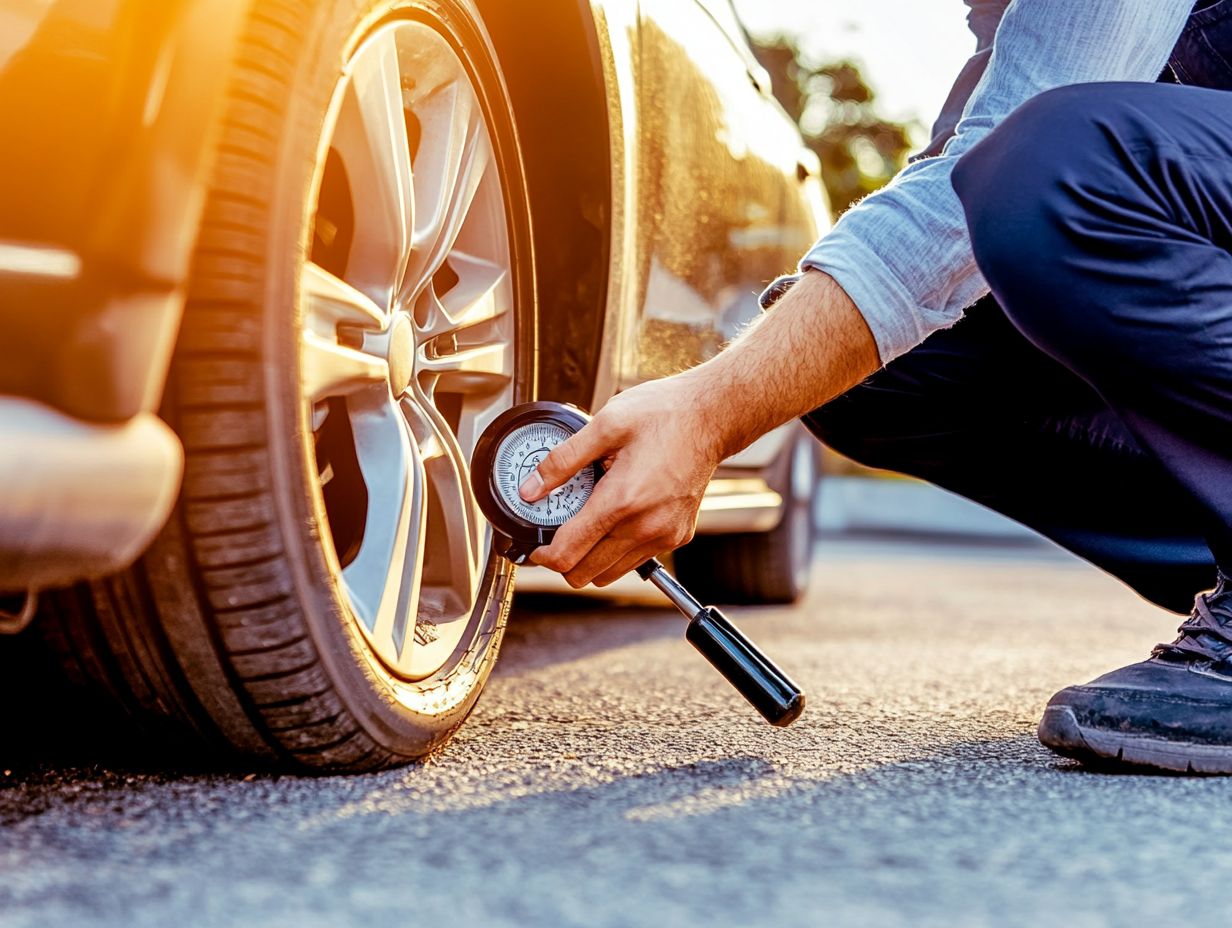
Monitoring fluid levels, belts, and hoses is essential for preserving your vehicle’s overall health.
By regularly checking each fluid like engine oil, coolant, and brake fluid you ensure that all systems are running efficiently, helping prevent overheating or component failure.
The integrity of belts and hoses is equally important; they play a critical role in the proper functioning of vital systems, including the engine and transmission. Overlooking their condition can lead to serious problems, such as unexpected breakdowns or hefty repair bills.
Embracing a culture of proactive maintenance not only enhances your vehicle’s performance but also significantly mitigates the risks associated with neglect. Making routine checks a staple of your vehicle care is an invaluable investment in its longevity and reliability.
A Pre-Driving Checklist: Your Key to a Safe Journey!
A pre-driving checklist is your vital key to ensuring your vehicle is fully equipped for the journey ahead. By enhancing driving safety and minimizing the risk of breakdowns, this checklist addresses all critical aspects of vehicle maintenance that need to be confirmed before you hit the road, including what to look for when test driving a car.
Final Steps Before Hitting the Road
The final steps before you hit the road can significantly impact your safety and the longevity of your vehicle.
Conducting a thorough pre-driving checklist not only ensures compliance with safety regulations but also minimizes the risk of unexpected breakdowns. Key components of this checklist include:
- Checking tire pressure: Ensure tires are inflated to the recommended level for safety and fuel efficiency.
- Ensuring that lights and indicators: are functioning properly to communicate your intentions to other drivers.
- Inspecting fluid levels: such as oil and coolant to ensure all systems are running efficiently.
Each of these checks is crucial. For instance, properly inflated tires enhance fuel efficiency and improve handling in adverse weather. A functional brake system is vital for safe stopping distances.
By dedicating time to this essential routine, you can embark on your journeys with confidence, knowing your vehicle is in optimal condition.
Frequently Asked Questions
Start your inspection today and ensure your safety on the road!
How do I inspect the tires before driving?
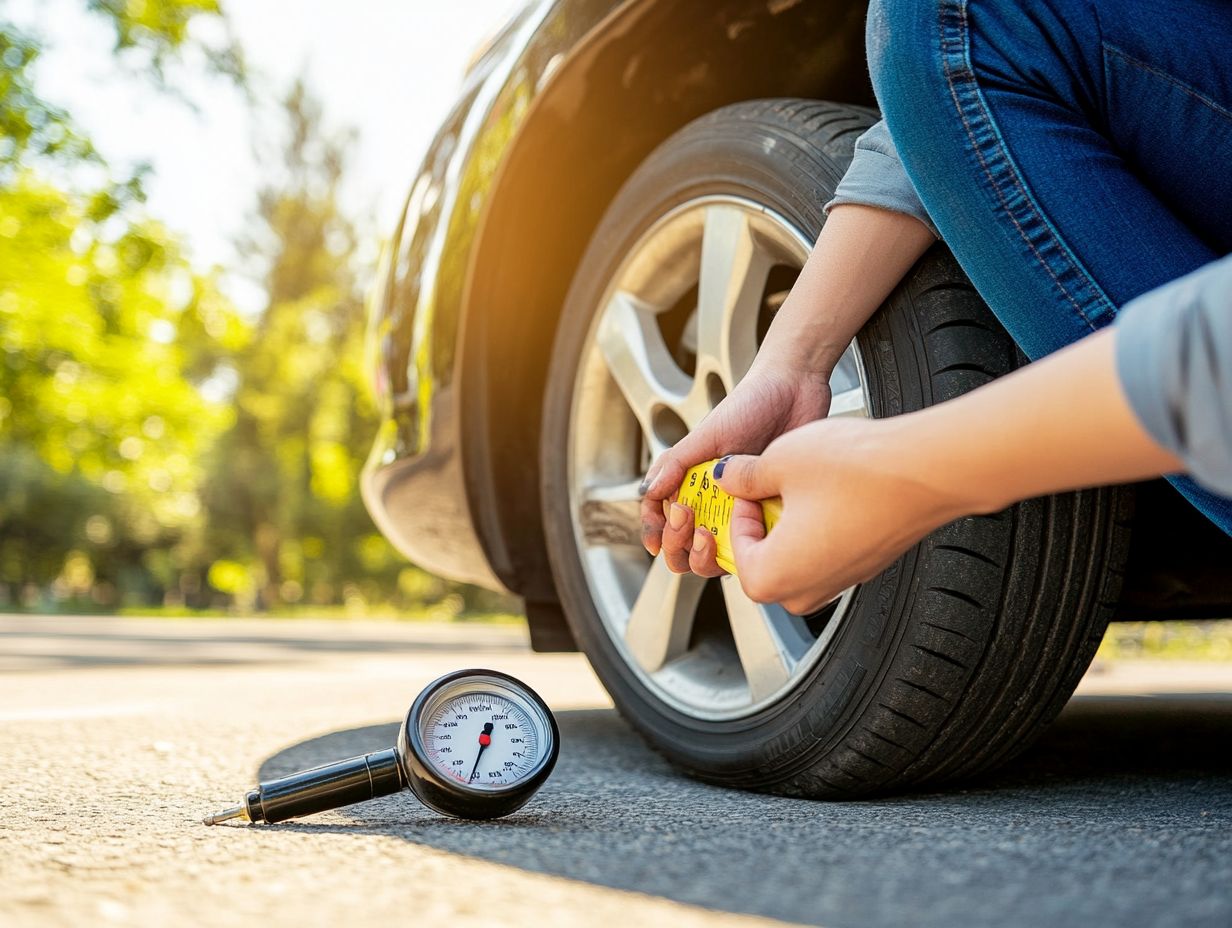
Check your tires for visible damage such as cuts, bulges, or punctures. Ensure the surface of the tire isn’t worn down and that the pressure is at the recommended level.
Use a tire pressure gauge to verify pressure and add air if needed.
What should I look for when inspecting the brakes?
Inspect your brakes for signs of wear on the brake pads or rotors. Look for rust, cracks, or uneven wear.
Also, check the brake fluid level to ensure it s appropriate.
How do I inspect the lights and signals on my car?
Turn on each light individually to make sure they work properly. This includes headlights, taillights, brake lights, turn signals, and hazard lights.
Replace any non-working bulbs before you drive.
What should I check under the hood before driving?
Check the engine oil level to ensure it s where it should be. Also, inspect the coolant level and top it off if necessary.
Look over the belts and hoses for signs of damage and replace them if needed.
How do I inspect the windshield wipers?
Lift the wipers off the windshield and check for cracks or tears in the rubber. Make sure they re securely attached to the wiper arms.
Replace the wiper blades if needed for clear visibility.
What should I do if I notice any issues during the inspection?
Notice any issues during your inspection? Address them before driving.
Your safety and the safety of others depend on having your car in good working condition.




